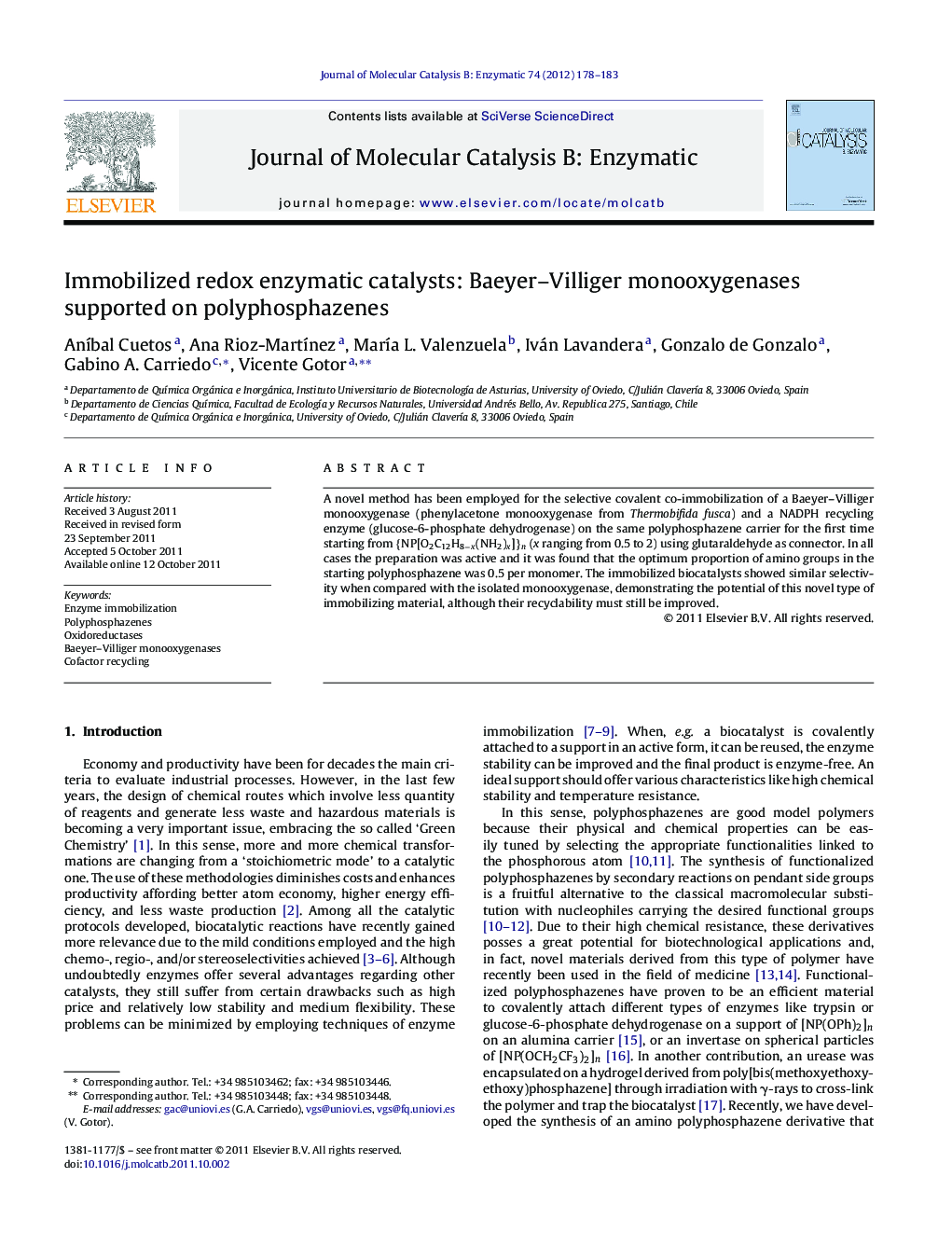| Article ID | Journal | Published Year | Pages | File Type |
|---|---|---|---|---|
| 70335 | Journal of Molecular Catalysis B: Enzymatic | 2012 | 6 Pages |
A novel method has been employed for the selective covalent co-immobilization of a Baeyer–Villiger monooxygenase (phenylacetone monooxygenase from Thermobifida fusca) and a NADPH recycling enzyme (glucose-6-phosphate dehydrogenase) on the same polyphosphazene carrier for the first time starting from {NP[O2C12H8−x(NH2)x]}n (x ranging from 0.5 to 2) using glutaraldehyde as connector. In all cases the preparation was active and it was found that the optimum proportion of amino groups in the starting polyphosphazene was 0.5 per monomer. The immobilized biocatalysts showed similar selectivity when compared with the isolated monooxygenase, demonstrating the potential of this novel type of immobilizing material, although their recyclability must still be improved.
Graphical abstractFigure optionsDownload full-size imageDownload as PowerPoint slideHighlights► Several amino polyphosphazenes have been readily synthesized as enzymatic supports. ► Phenylacetone monooxygenase (PAMO) was successfully immobilized on these polymers. ► Co-immobilization of PAMO and glucose-6-phosphate dehydrogenase (G6PDH) was also performed. ► Recyclability must still be improved while enzymatic selectivity was not affected.
